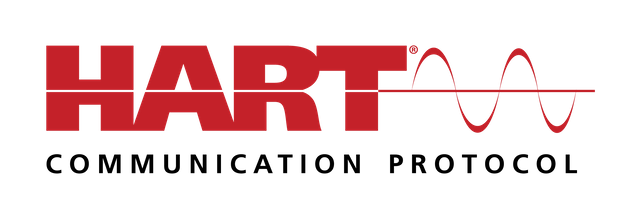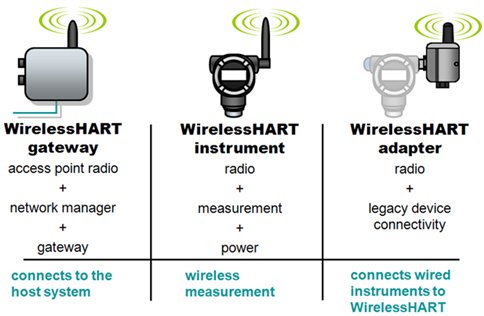Hart Protocol
Today I want to write a different article presenting the hart protocol with a history of several episodes, which has taken place in industrial production plants, and particularly in measurement and automation systems. This story illustrates the service HART has provided to its many users.

Episode 1:
A few decades ago, process instrumentation was fully analogue, with 4..20 mA output signals aimed at bringing a measurement signal to the control system to execute the corresponding control loop. However, the inspection and diagnostic procedures were cumbersome (calibrations / test bench adjustments, no further information about the nature of the faults occurring; furthermore, extensive knowledge of electronics was required in order to establish the nature of a fault). In many cases, no one came to know that there were problems with the operation of field instrumentation until the results of the processes themselves became evident.

Episode 2:
In order to optimize the operations of configuration, commissioning, diagnosis and maintenance, it was necessary to create another type of process instrumentation, which had enough intelligence to be configured cold (without applying real process conditions), and which could also generate information regarding the faults that could occur in each case. However, the creation of a completely digital instrument could be problematic to a certain extent, given the amount of cable installed for the control signals. Hence, it was necessary to look for an intermediate alternative that could transmit the information generated by the instruments and at the same time use the infrastructure already used. It was the time of the HART protocol

Classic HART communication is done through the same cables that are used to carry the current signal to the control systems. HART compatible devices are capable of transmitting configuration and diagnostic information, generating a sinusoidal current signal, which travels superimposed on the loop current signal. This information can be read through field consoles (handheld) or through HART modems communicated with stand alone computer applications.
The HART protocol is defined as open, i.e. a certain console or modem (communication master) can access the data of a device (slave) of any brand. However, for this to be possible it requires that the communication master has a file that can recognize the different devices: a device description (DD), which is a unique identifier for each model of device available.
This scheme worked without major surprises for a long time. Given its response time (approximately 500 msec), the protocol was not actually used for control tasks, but for asynchronous tasks that were not too demanding in terms of response time (monitoring, supervision, parameterization, fault detection, etc.). Under the scheme of figure 2, someone is required to be with the handheld monitoring devices one by one, which is also cumbersome. The initial solution to that is to have a master who can receive different channels / devices at the same time, which in turn allows communication with a computer application for engineering and maintenance.

Episode 3:
Asset management and predictive maintenance are concepts that are increasingly used at the industry level. These concepts, from the point of view of field equipment require centralized access to information; from the point of view of field devices with HART protocol, such integration can be done by wiring HART signals to HART multiplexers that can communicate with applications for engineering and maintenance. If this additional cabling is costly and cumbersome, the alternative arises to access the information by radio and rule out the possibility of more cables. Then WIRELESS HART arrives to reinforce the existing concept.

The main purpose of WIRELESS HART is to bring the same information that HART devices have traditionally had, but now to asset management systems or engineering stations in such a way that the addition of cabling infrastructure is minimal, i.e. by radio.
The system consists of field devices that now have the ability to transmit wirelessly, which can be achieved through native wireless equipment (battery powered), or through the installation of radio adapters to existing equipment (powered by the current loop). However, the goal is to bring information to the plant engineering and maintenance systems. The information coming from the field equipment is collected through a Gateway that converts the HART format to protocols such as MODBUS or Ethernet that are used to reach the aforementioned engineering and maintenance systems.
The drivers used in traditional HART systems (device description, FDT), are usually also used in wireless HART systems. Similarly, as already mentioned, existing equipment powered by the control loop can be integrated through the addition of HART adapters.
WirelessHart has come to improve maintenance planning, reduce energy consumption, minimize plant operator rounds, and get timely data from remote sites. But things like smart plant, cloud services and the internet of things came along; to be successful with these new concepts, deeper interconnectivity is needed that is not necessarily achieved by simply communicating with engineering and maintenance stations.

Episode 4:
Faced with the prospect of plant digitization, comes the technology of HART_IP. Until episode 3, HART devices could be accessed in engineering and maintenance systems only from the conversion of the protocol to other higher level (MODBUS, ethernet with the help of standards such as OPC and FDT).
HART-IP provides transparent access to the level of control and management of data from WirelessHart systems. Intermediation, i.e. conversion to other protocols, is no longer necessary to complete the communication. Thanks to a native HART protocol that can travel over Ethernet networks, it is possible to ensure complete interoperability of devices and systems.
Both MODBUS and OPC are platforms that work well when it comes to accessing process variables, but they are not versatile enough to support the intelligence of asset management systems. HART-IP enables transparent access to all configuration and diagnostic information on HART devices in the field via a network ranging from Gateway, through control system and intelligent management software applications.


his concludes another installment that I leave for you with much affection hoping that I can be of use to you and sincerely thanking you for the time you have taken to read my article.
Steemit is expanding to other blog ecosystems, will soon be official with Smart Media Tokens and is already possible for WordPress thanks to the steempress plugin, a revolutionary initiative. If you wish to support the project I invite you to vote for @steempress as a witness by clicking here

Posted from my blog with SteemPress : https://automation80.000webhostapp.com/2018/10/hart-protocol